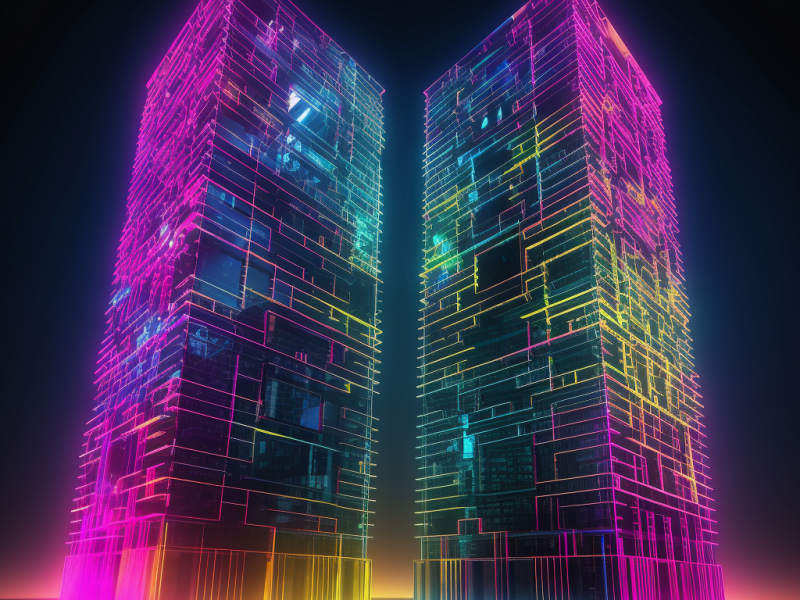In an era where innovation is king, the concept of Digital Twins has emerged as a transformative force across industries. What are Digital Twins, and how are they shaping the future of technology and business? This blog post offers a window into this exciting development.
What Exactly is a Digital Twin?
A Digital Twin is a sophisticated virtual model that mirrors a physical object or system in every conceivable way. It’s not just a static 3D representation but a living simulation that breaths in data from its real-world counterpart through an array of sensors and IoT devices. This continuous influx of information keeps the Digital Twin evolving, making it an accurate, real-time reflection of the physical entity. This concept transcends mere visualization; it equips engineers, developers, and business leaders with a powerful tool to experiment, analyze, and predict outcomes in a risk-free virtual environment, paving the way for innovation and optimization in design, operation, and customer experience.
The Multiverse of Applications
Digital Twins serve as a digital nexus for a multitude of applications that cut across various sectors. In the realm of manufacturing, they are instrumental in refining product designs and streamlining production processes. In healthcare, Digital Twins are enabling personalized medicine by simulating individual patient responses to treatments. Smart cities leverage them to optimize traffic flow and energy consumption, while the energy sector uses them to enhance the efficiency of renewable energy systems. Each application of Digital Twins represents a leap towards precision, efficiency, and agility, showcasing the technology’s capacity to not only reflect reality but also to predict and improve future outcomes through simulation and analysis.
The Architectural Blueprint
At the core of every Digital Twin is a meticulously crafted architectural blueprint that integrates various technologies to create a seamless union between the physical and digital realms. This architecture encompasses sophisticated sensors that gather real-time data, cloud computing platforms that offer scalable storage and processing power, and advanced analytics that transform data into insights. Visualization tools bring the model to life, allowing for interactive exploration and decision-making. The architecture is designed for flexibility, enabling it to adapt as the physical counterpart changes over time. This dynamic structure is the foundation upon which Digital Twins operate, providing a robust and reliable framework to simulate, monitor, and optimize complex systems in a variety of environments.
From Challenges to Opportunities
Embracing Digital Twins technology comes with its set of challenges, yet these very obstacles present significant opportunities for growth and innovation. One of the primary challenges is ensuring the security and integrity of the data that feeds into Digital Twins, as it often encompasses sensitive and proprietary information. The technology also requires substantial upfront investment in infrastructure and expertise to develop and maintain the virtual models. However, these challenges are being turned into opportunities as organizations recognize the strategic value of Digital Twins. By addressing data security proactively, companies can strengthen their overall cybersecurity posture. The investment in Digital Twins technology leads to long-term savings through optimized operations and reduced downtime. Moreover, the necessity to cultivate a skilled workforce skilled in the nuances of Digital Twins is fostering an environment of continuous learning and professional development, further empowering industries to innovate and excel.
A Glimpse into the Future
The horizon for Digital Twins is expansive and bright, heralding a future rich with possibility and advancement. As we peer into this future, we see a landscape where Digital Twins become even more integrated with emerging technologies such as AI and machine learning, providing deeper insights and more accurate predictive models. The democratization of technology is likely to make Digital Twins more accessible to smaller enterprises, fostering innovation across the board. Standardization efforts will enhance interoperability among systems and industries, amplifying the benefits of Digital Twins. We are on the threshold of a transformative era where the symbiosis of the digital and physical worlds enhances human decision-making, leads to more sustainable practices, and unveils new vistas for exploration and discovery.
Digital Twins stand as a testament to the innovation and progress emblematic of the fourth industrial revolution. They are not merely a technological curiosity but a pivotal element in the ongoing narrative of digital transformation. As industries increasingly adopt and integrate Digital Twins into their core operations, we are witnessing a paradigm shift in how we interact with, understand, and optimize the physical world. The potential unlocked by Digital Twins extends beyond incremental improvements, hinting at a revolution in efficiency, sustainability, and innovation. As organizations and societies navigate the complexities of an interconnected world, Digital Twins offer a compelling vision of a future where the boundaries between the tangible and the digital are harmoniously blurred, leading to enhanced experiences and more informed decision-making.
Our dedicated team is ready to answer your questions and provide the insights you need to embark on a transformative journey with digital twins. Don’t hesitate to get in touch and discover the power of advanced virtual modeling.

